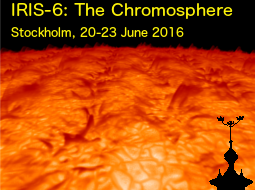Speaker
David Orozco Suárez
(Instituto de Astrofísica de Andalucía)
Description
Spectropolarimetry in the He I 1083nm multiplet offers a
unique opportunity to
observe magnetic fields in the chromosphere. There, the
magnetic fields are expected
to be much lower in intensity than in the photosphere. In
this regard, the
polarization signals of the He I 1083nm multiplet are
sensitive to atomic level
polarization and to the joint action of the Hanle and Zeeman
effects, which makes
this spectral line ideal for the determination of a wide
range of magnetic field
strengths in chromospheric and coronal structures. The
information about the magnetic
field vector, encoded onto the Stokes I, Q, U, and V
profiles, can be successfully
extracted with present techniques. Moreover, it is located
in the near-IR where
atmospheric seeing effects are less severe, so much that
telescopes can achieve their
diffraction limit, although at less spatial resolution than
in the visible. Here, a
review of the first, superb spectropolarimetric observations
taken in the He I 1083
nm multiplet with the GREGOR Infrared Spectrograph (GRIS), a
near-infrared scanning
spectropolarimeter installed at the German GREGOR 1.5-meter
solar telescope located
in the Observatorio del Teide, Tenerife, is given. Some of
the scientific challenges
faced by the new facility are discussed.
Primary author
David Orozco Suárez
(Instituto de Astrofísica de Andalucía)

